Explore the Water: Try Paddleboarding, Kayaking, or Canoeing
An Inviting Dive Into the World of Human-Powered Water Adventures
When life feels a little too digital and deadlines stack up, there’s something incredibly grounding about spending time on the water. Paddleboarding, kayaking, and canoeing offer not just a refreshing break but also a full-body workout, moments of mindfulness, and a unique way to connect with nature. Whether you're navigating the calm waters of a serene lake, paddling through coastal estuaries, or floating down a gentle river, these activities offer adventure at your own pace.
Why These Water Sports Are Booming
In recent years, more people have discovered the joy of water-based hobbies that are accessible, eco-friendly, and surprisingly versatile. They don’t require a motor, a license, or even waves. With a paddle in hand, you become part of the environment—gliding silently alongside herons, peeking at turtles basking on logs, or drifting under tree canopies that arch like nature’s cathedrals. These low-impact sports are great for beginners, family outings, or solo soul-searching trips, offering something for everyone, from thrill-seekers to meditative explorers.
Paddleboarding: The Stand-Up View of Serenity
Stand-Up Paddleboarding (SUP) has surged in popularity due to its accessibility and the unique vantage point it offers. Standing on a wide, stable board, you use a single long paddle to move through the water. The first few minutes may involve some wobbly balance, but the learning curve is fairly quick. Once you're up and moving, you experience a sense of calm and freedom that’s hard to beat.
SUP provides an excellent core workout, as your body constantly adjusts to maintain balance. Legs engage for stability, arms work to paddle, and your core becomes the star of the show. It’s also a fantastic gateway to other activities—some boards are even designed for SUP yoga, fishing, or long-distance touring.
Ideal for:
Calm lakes, bays, and harbors
Morning meditation paddles
All fitness levels
Equipment Needed:
Stand-up paddleboard
Paddle
Life jacket (PFD)
Leash (to keep the board attached to you)
Optional: dry bag, water bottle, hat, sunscreen
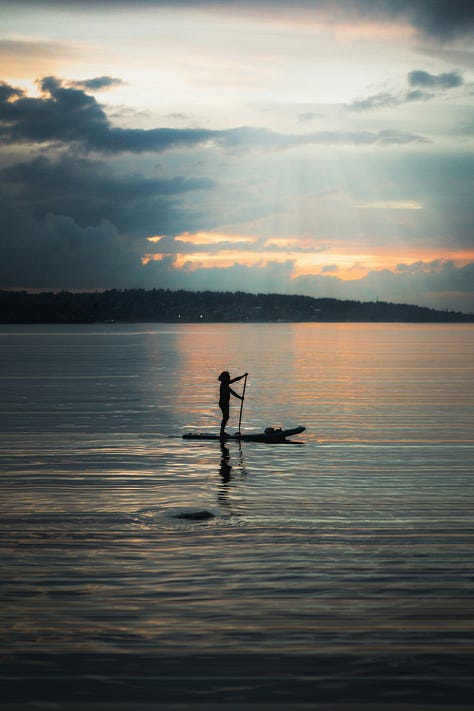
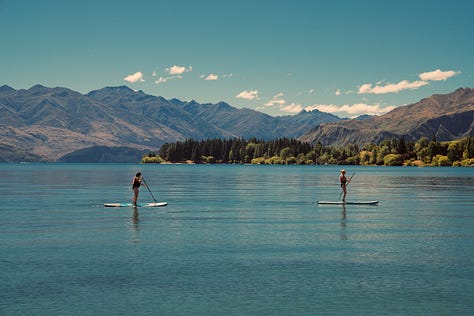
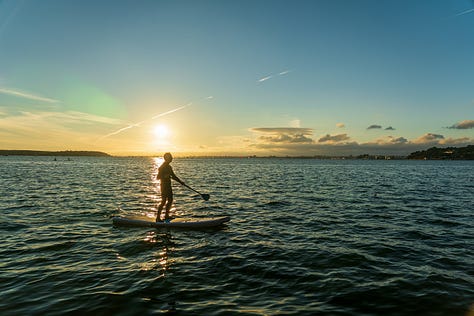
Kayaking: The Swift and Stealthy Explorer
Kayaking puts you closer to the waterline, creating a more immersive feeling as you glide through narrow inlets, over submerged landscapes, and past wild animals in their natural habitat. With a double-bladed paddle and a closed or open cockpit, you’ll quickly feel the joy of moving efficiently and quietly through various water terrains.
There are several types of kayaks: recreational kayaks for calm waters, touring kayaks for long-distance paddles, and whitewater kayaks for the thrill-seekers. Some even come equipped for fishing, complete with rod holders and tackle storage.
Kayaking is intuitive, with easy-to-learn strokes and good maneuverability. It’s excellent for cardio, building upper body strength, and boosting endurance. Plus, it offers a quiet escape from the world—where the only sound might be the rhythm of your paddle breaking the water's surface.
Ideal for:
Rivers, lakes, oceans, and even whitewater rapids
Wildlife watching
Fitness-focused paddling
Equipment Needed:
Kayak
Double-bladed paddle
Life jacket (PFD)
Waterproof gear (if venturing into cold or choppy waters)
Optional: bilge pump, spray skirt, map or GPS
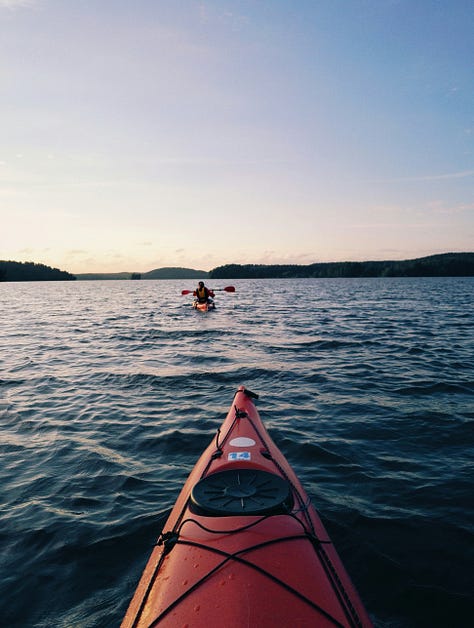
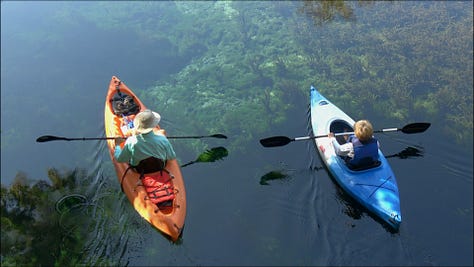

Canoeing: The Classic, Peaceful Journey
Canoeing carries a timeless charm. It’s the oldest of the three and often feels the most traditional—whether you're picturing explorers on vast wilderness routes or couples gliding across a moonlit lake. Canoes are typically open-topped, with bench seating and room for gear, dogs, or even a picnic basket.
Using a single-bladed paddle, canoeing is more of a team effort. It’s often enjoyed in pairs, with each person paddling on opposite sides to create rhythm and control direction. It's ideal for longer journeys, especially with camping gear in tow.
This sport fosters a sense of cooperation, and it's well-suited for families, fishing outings, or slow-paced scenic routes. Canoeing is as much about the journey as the destination.
Ideal for:
Lakes and calm rivers
Multi-day trips or camping
Families or pairs
Equipment Needed:
Canoe
Paddles (1 per person)
Life jackets (PFDs)
Dry bags or waterproof containers for gear
Optional: cooler, map, seat cushions
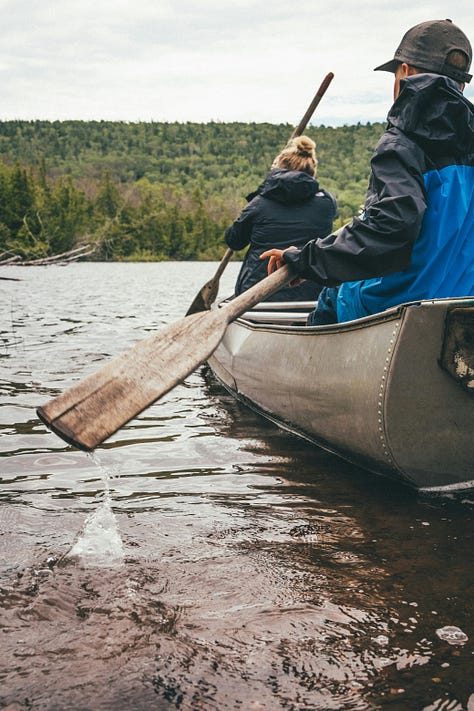
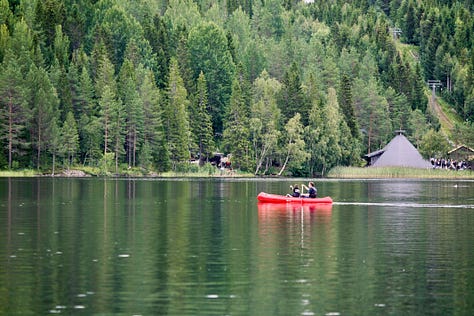

Benefits Beyond the Paddle
All three activities offer powerful physical and mental health benefits. Here’s what you can expect:
Physical Fitness: These are low-impact, full-body workouts. Paddleboarding emphasizes balance and core strength, kayaking builds arm and shoulder endurance, and canoeing strengthens coordination and leg bracing.
Mental Wellness: Being out on the water reduces cortisol levels (the stress hormone), promotes mindfulness, and improves mood.
Environmental Appreciation: You become more attuned to ecosystems, seasonal changes, and conservation issues—often seeing the world from a new perspective.
Social Connection or Solitude: Whether you're paddling with friends or enjoying quiet solitude, these activities can fit your preferred social setting.
Getting Started: Tips for Beginners
Take a Lesson or Guided Tour: Local outfitters often offer affordable beginner classes that provide gear and teach safety skills.
Check Weather and Water Conditions: Calm conditions are best for learning. Wind, tides, and currents can significantly impact your experience.
Dress Appropriately: Quick-drying, water-resistant clothing and water shoes are best. Always wear a life jacket.
Start Small: Practice close to shore before venturing out. Learn basic strokes and rescue techniques if needed.
Stay Hydrated and Bring Sun Protection: The sun reflects off the water and can intensify exposure.
Where to Go: Paddle-Friendly Destinations
If you’re looking to paddle your way through new scenery, here are a few destination ideas across different terrains:
Lake Tahoe, California/Nevada (SUP & Kayak): Crystal-clear waters and a majestic mountain backdrop.
Boundary Waters, Minnesota (Canoeing): Legendary canoe routes with portages, campsites, and unmatched quiet.
Florida Keys (Kayaking): Paddle through mangroves and spot sea turtles and manatees.
Columbia River Gorge, Oregon/Washington (SUP & Kayak): Beautiful cliffs, waterfalls, and glassy water inlets.
Great Lakes (All): Massive freshwater seas offering endless adventure opportunities.
Final Thoughts: Paddle Into a New Passion
Whether you choose to stand tall on a paddleboard, sit sleekly in a kayak, or glide gently in a canoe, each experience is an invitation to slow down, breathe deeper, and explore more. These sports don’t demand elite athleticism or pricey equipment to get started—just curiosity and a willingness to dip a paddle in the water.
So next weekend, trade your screen time for stream time. Bring a friend, your dog, or just your thoughts. Paddleboarding, kayaking, and canoeing might just be the refreshing reset you didn’t know you needed.
5 little-known facts
1. Paddleboarding Was Popularized by Surf Instructors in Hawaii—but It Has Ancient Roots
While modern stand-up paddleboarding (SUP) became trendy in the early 2000s thanks to Hawaiian surf instructors like Laird Hamilton, its roots go back thousands of years. Ancient Peruvian fishermen used reed rafts and paddles to navigate the ocean while standing—a method eerily similar to today's SUP.
2. Kayaks Were Originally Designed for Hunting in the Arctic
Traditional kayaks were created by Inuit, Yup'ik, and Aleut tribes for hunting marine animals. The original frames were made from driftwood or whale bones, and the covering was often seal skin. These boats were so stealthy in the water that “kayak” translates to "man's boat" or "hunter's boat" in some native languages.
3. Canoeing Was an Olympic Sport Before Kayaking
Canoeing made its Olympic debut in 1924 as a demonstration sport and became an official event in 1936—a full 12 years before kayaking joined. The Olympic version of canoeing involves athletes kneeling on one knee while paddling, which most recreational paddlers never do.
4. You Burn More Calories Paddleboarding Than Biking at a Moderate Pace
A person can burn 500–700 calories per hour paddleboarding casually—more than a moderate bike ride. SUP not only engages the upper body and core but also continually challenges your balance, making it a stealthy full-body workout.
5. Some Canoe Routes Are So Old, They Were Used by Indigenous Peoples for Trade
Certain canoe routes in North America, such as the Voyageurs' route in Canada and the Mississippi River paths, were used by Indigenous communities for centuries before European explorers arrived. These ancient water highways were critical for trade, cultural exchange, and seasonal migration.
10 top-rated locations around the world for paddleboarding, kayaking, or canoeing—
🌊 1. Lake Tahoe, California/Nevada, USA
Best for: Paddleboarding & Kayaking
Crystal-clear alpine waters and stunning mountain views make Lake Tahoe a dream for paddlers. Early mornings offer glassy water, perfect for SUP.
🛶 2. Boundary Waters Canoe Area, Minnesota, USA
Best for: Canoeing
With over 1,200 miles of canoe routes and more than 1,000 lakes, this untouched wilderness is perfect for multi-day canoe trips.
🐢 3. Florida Keys, Florida, USA
Best for: Kayaking
Paddle through mangrove tunnels, coral reefs, and calm ocean flats—often alongside dolphins, rays, and manatees.
🏞️ 4. Banff National Park, Alberta, Canada
Best for: Paddleboarding & Kayaking
Glacial lakes like Moraine and Lake Louise offer surreal turquoise waters surrounded by towering Rocky Mountains.
🌿 5. Halong Bay, Vietnam
Best for: Kayaking
A UNESCO World Heritage site, Halong Bay’s emerald waters and dramatic limestone cliffs are best explored by kayak.
🐧 6. Abel Tasman National Park, New Zealand
Best for: Kayaking
Golden beaches, lush forests, and wildlife like seals and penguins await you in this coastal paradise.
🏝️ 7. Bora Bora, French Polynesia
Best for: Paddleboarding
Paddle over crystal-clear lagoons with views of Mount Otemanu. Ideal for a tropical SUP adventure in calm, warm waters.
🌲 8. The Amazon River, South America
Best for: Canoeing
A guided canoe trip through parts of the Amazon lets you encounter exotic wildlife, dense rainforest, and remote villages.
🐬 9. Amalfi Coast, Italy
Best for: Kayaking
Explore sea caves, cliffs, and colorful coastal towns like Positano from a kayak—best in the early morning to avoid boat traffic.
🐾 10. Noosa Everglades, Queensland, Australia
Best for: Canoeing & Kayaking
One of only two everglade systems in the world, this location features reflective waters, birdlife, and peaceful paddling routes.






